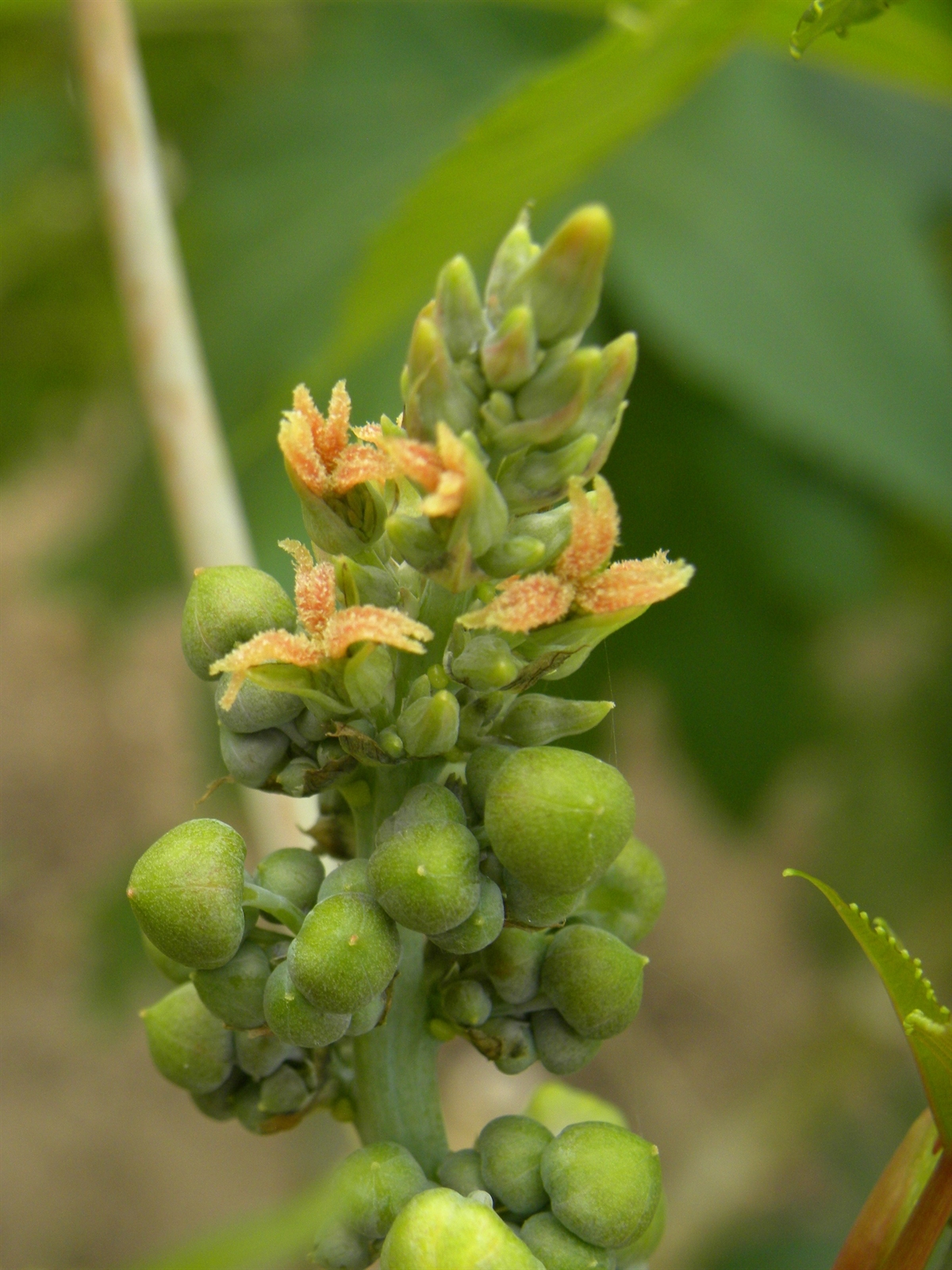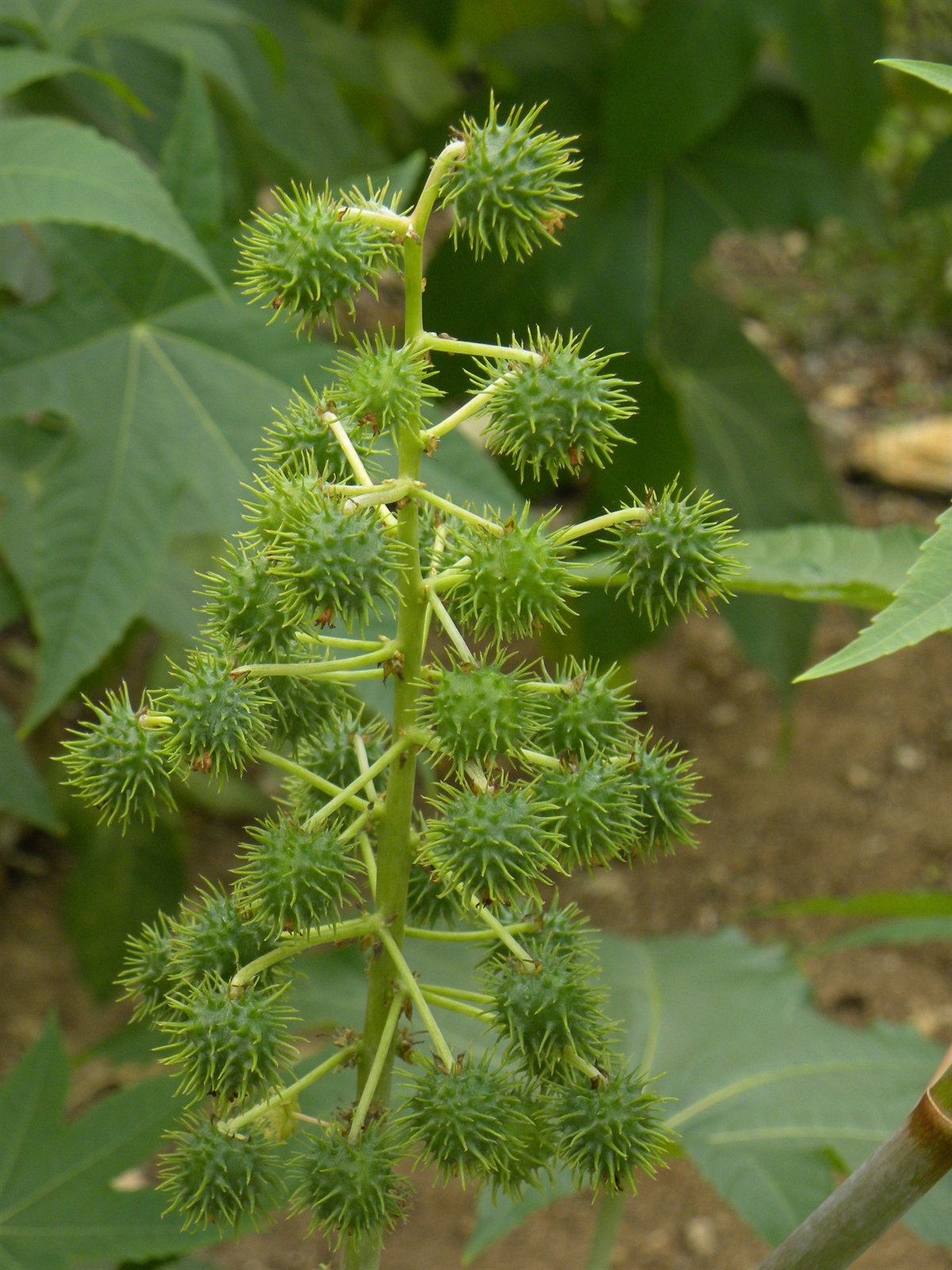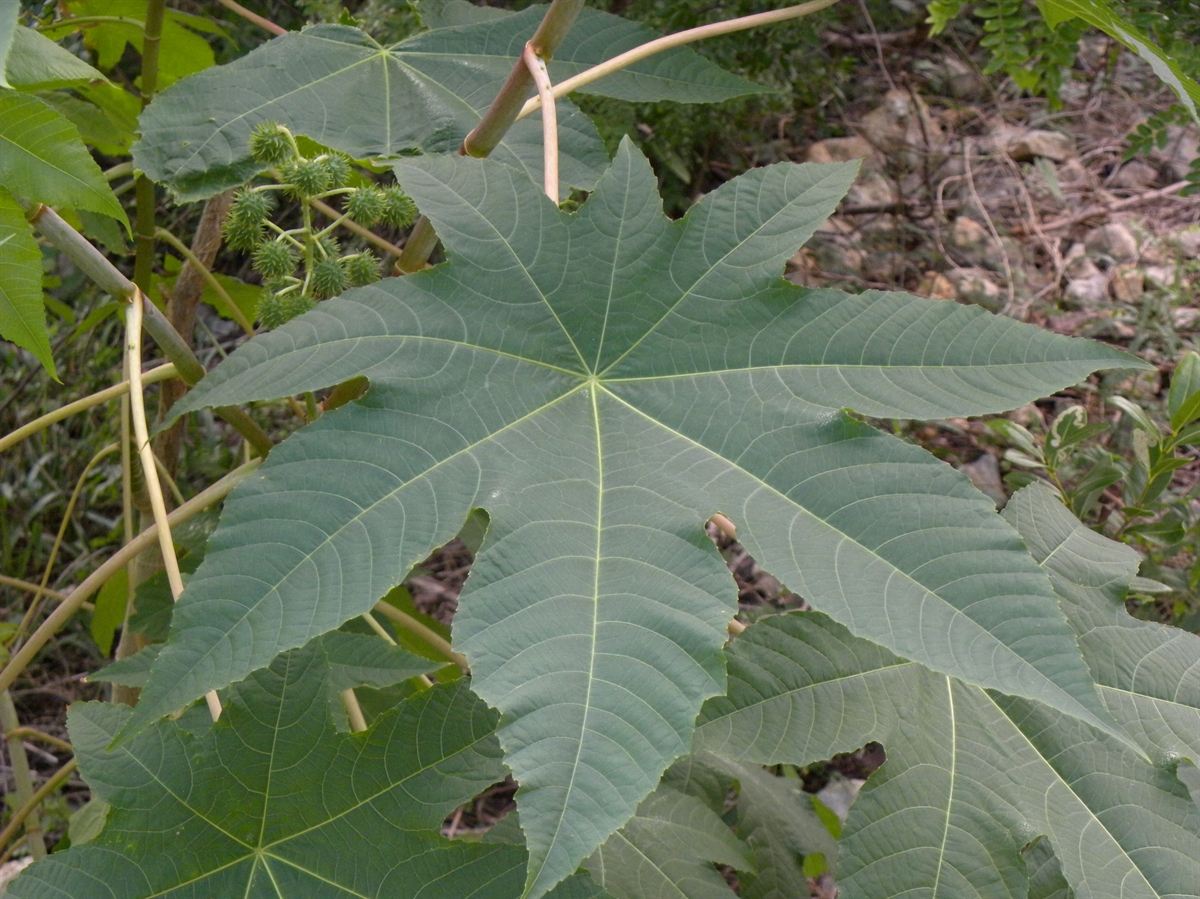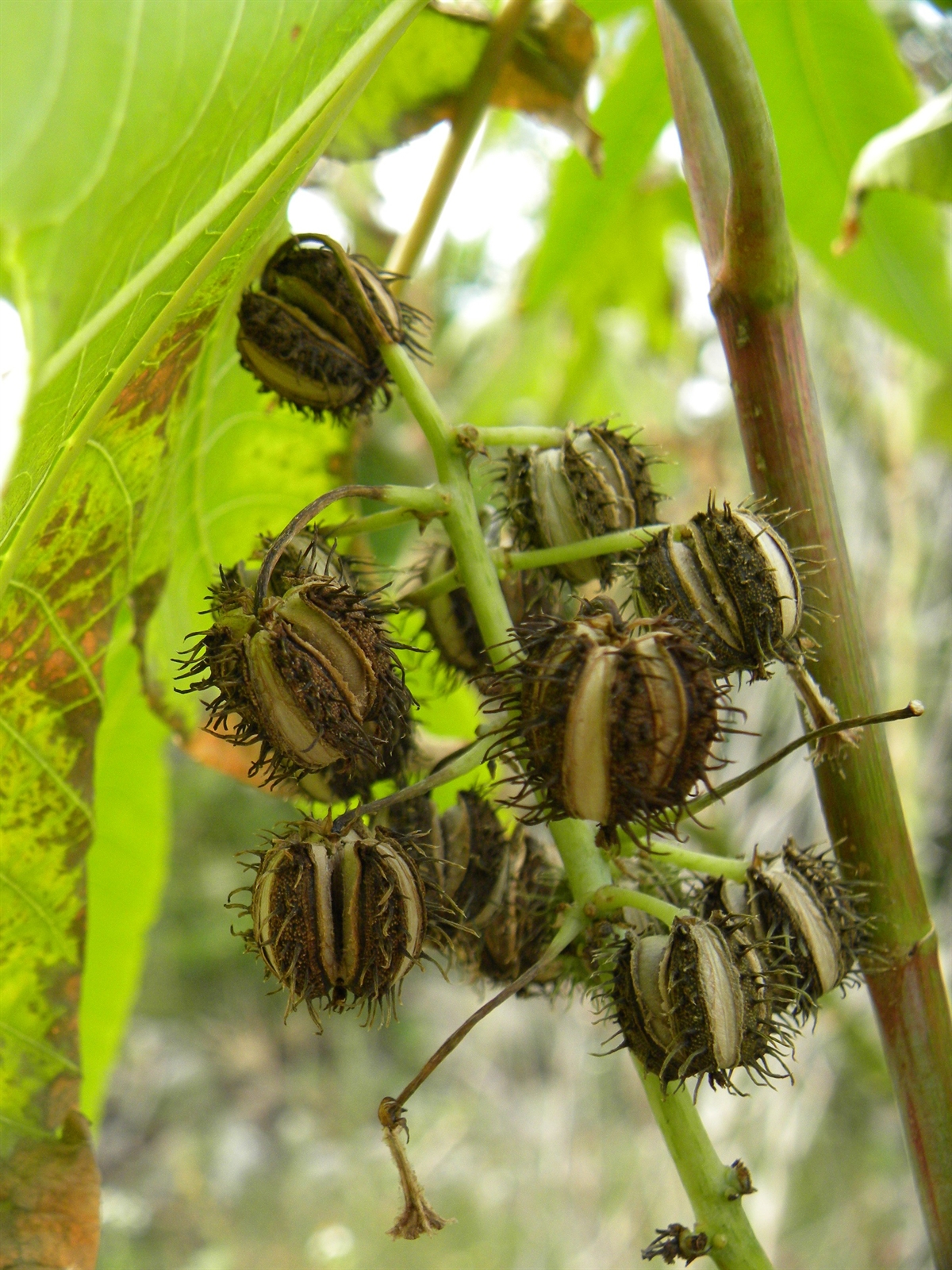Habit: Ricinus communis grows as an annual to 5 meters (usually shorter) in height with hollow internodes. The palmate leaves are arranged alternately to 60 cm in length, peltate with 5-11 lobes. The lobes have a serrate margin and an acute apex.
The incomplete, imperfect, actinomorphic flowers are arranged in terminal and axillary racemes with staminate flowers below and carpellate flowers above. Each flower has 5 sepals. The staminate flowers have no corolla and numerous stamen-like structures arising from the receptacle. The carpellate flowers have a single superior ovary with 3 red stigmas, 3 locules, and numerous seeds. The fruit is a capsule at maturity covered with spine-like projections.
Habitat: Ricinus communis grows in Human Altered environments (fields, yards, roadsides, garbage dumps).
Distribution: Ricinus communis, while NOT native to the Lucayan Archipelago, is widespread throughout the islands. It is native to Africa but is currently distributed widely across the globe.
Medicinal/Cultural/Economic usage: Ricinus communis is used in the Lucayan Archipelago to treat gastrointestinal problems (constipation) and pain (headaches).
Elsewhere in the Caribbean it is used parturition as well as to treat gonorrhea.
The seeds are considered poisonous to eat but oils produced from it are used as an emetic and for machine oil.
This is the species that the deadly biotoxin Ricin is produced from.




